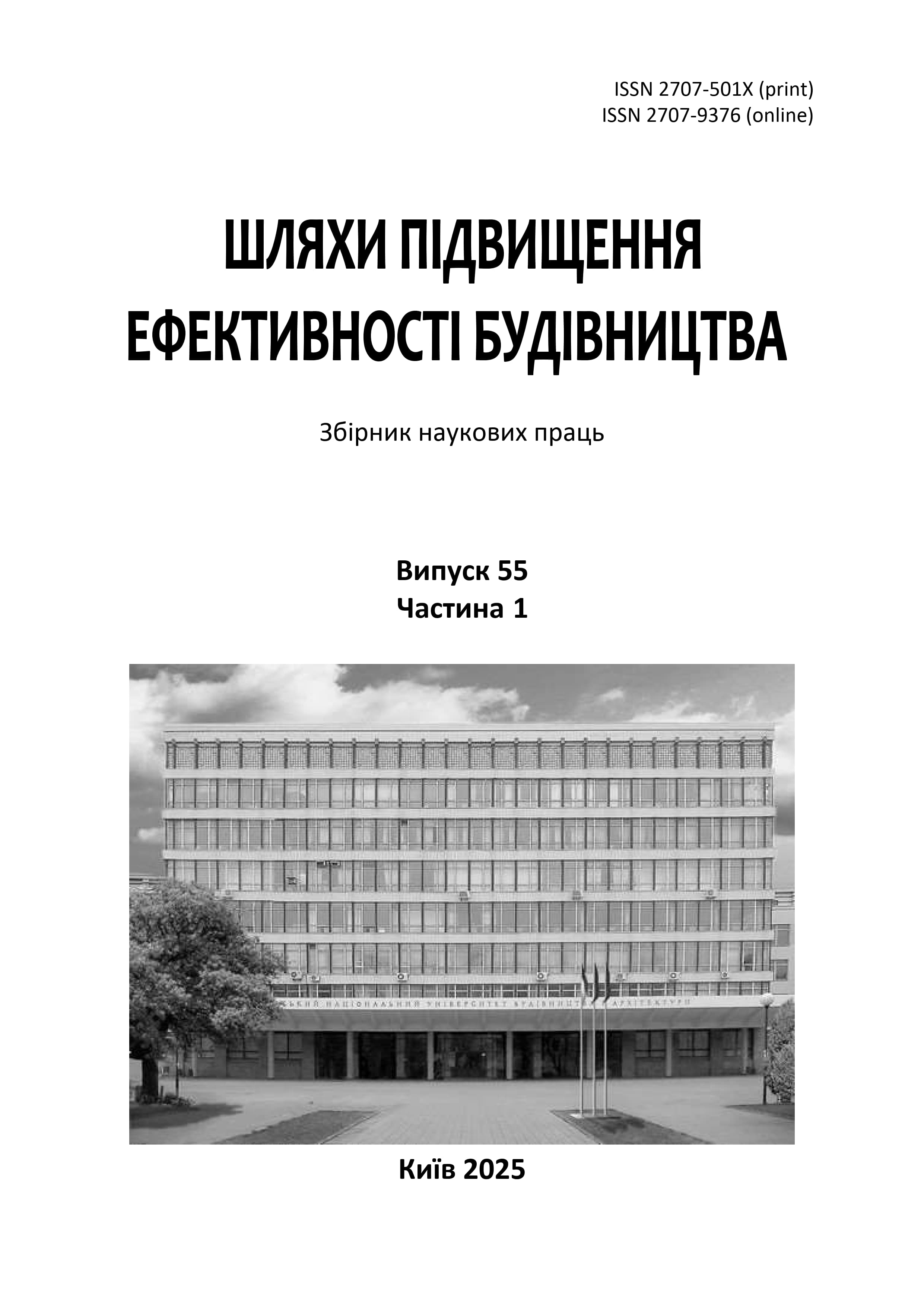Features of the technological process of construction of houses using modular technology
DOI:
https://doi.org/10.32347/2707-501x.2025.55(1).61-69Keywords:
modular construction, module, modular house, prefabricated structures, modular temporary housing, energy-efficient buildings, rapid construction technologies, speed, comfort, practicalityAbstract
The search for ways to accelerate the construction of buildings of both temporary and long-term aspects has been and remains a leading issue in the construction industry of Ukraine, especially given the conditions of martial law, internal displacement of people, destruction of housing, etc.
This article reveals the features of modular technology, which is increasingly used in the construction industry. In particular, during the writing of the work, the differences that are distinguished in modular construction in relation to traditional ones were investigated to create a picture of the practicality and relevance of modular construction objects.
Also, based on the analyzed historical discourse on the use of modular technologies, the feasibility of their application in our time was characterized and determined, paying special attention to various factors and factors: martial law, destruction of residential premises and buildings, displacement of highly qualified personnel and the population in general, etc.
During the study of the features of modular construction, well-known examples of construction solutions, their specificity and implementation aspects were also studied, on the basis of which the prospects for the development of modular construction in our time, the stages of its gradual introduction into the construction industry and use taking into account certain factors or factors were outlined.
Based on the analyzed elements of the influence of organizational and technological factors on the construction industry, it was found that traditional construction has exceptionally high indicators of reliability, durability, stability, etc., but at the same time it is inferior to modular construction of buildings and structures in terms of time and resource consumption, environmental impact, as well as in rapid adaptation to the special challenges of today, of a social or natural nature, etc., which makes the use of modular technologies one of the leading phenomena in the construction sector.
References
Банах В.А., Єгоров Ю.П., Гребенюк О.В. Аспекти модульної інтерференції взаємодій архітектурних просторів і архітектурного середовища. Містобудування та територіальне планування. 2014. № 51. С. 7-13.
Задорожнікова І., Кислюк Д., Чапюк О., Парфентьєва І., Пахолюк О. Сучасні будівельні матеріали, конструкції та технології модульного будівництва. Collection of Scientific Papers «SCIENTIA», (May 17, 2024; Sydney, Australia), 2024, 201–204. URL: https://previous.scientia.report/index.php/archive/article/view/1842 (дата звернення 23.02.2025).
Мироненко В.П. Архітектурна ергономіка. Київ: НАУ-друк, 2009. 239 с.
Руденко Т.В. Поняття «модуль» в промисловій архітектурі. Сучасні проблеми архітектури та містобудування. 2012. № 31. С. 356 – 361
Семикіна О.В. Перспективи розвитку сучасних модульних принципів у проектуванні та будівництві. Сучасні проблеми архітектури та містобудування. 2014. № 35. С. 392-396.
Hodbe A., Sober R. Design of modular housing. International Research Journal of Engineering and Technology. 2019. Vol. 6. Issue 9. P. 734-738
The modularity is here: a modern history of modular mass housing schemes. URL: https://99percentinvisible.org/article/modularity-modern-history-modular-mass-housing-schemes/ (дата звернення 25.02.2025).
Уряд прийняв постанову про будівництво тимчасового житла для переселенців. URL: https://finbalance.com.ua/news/uryad-priynyav-postanovu-pro-budivnitstvo-timchasovoho-zhitla-dlya-pereselentsiv (дата звернення 25.02.2025).
У Львові відкрили друге модульне містечко для переселенців. URL: https://tvoemisto.tv/news/nasha_zadacha__daty_pryhystok_u_lvovi_vidkryly_druge_modulne_mistechko_dlya_pereselentsiv_131945.html (дата звернення 25.02.2025).
Зауваження та пропозиції ТОВ «ЮСДМ» щодо програми будівництва житла для тимчасових переселенців. URL: https://usdm.com.ua/relocation-development/ (дата звернення 25.02.2025).
ДСТУ Б А.2.4-4:2009. Основні вимоги до проектної та робочої документації. [Чинний від 2009-24-01]. Київ: Мінрегіонбуд України, 2009. 57 с.
ДСТУ Б А.2.4-7:2009. Правила виконання архітектурно-будівельних робочих креслень. [Чинний від 2010-01-01]. Київ: Мінрегіонбуд України, 2009. 75 с.
ДСТУ Б В.2.6-200:2014. Конструкції металеві будівельні. Вимоги до монтажу. [Чинний від 2015-07-01]. Київ: Укрархбудінформ, 2014. 73 с.
ДБН В.2.6-198:2014. Сталеві конструкції. Норми проектування. Зі Зміною № 1. [Чинний від 2015-01-01]. Київ : Мінрегіонбуд України, 2014. 199 с.
Downloads
Published
How to Cite
Issue
Section
License

This work is licensed under a Creative Commons Attribution 4.0 International License.
Authors who publish with this journal agree to the following terms:
- Authors retain copyright and grant the journal right of first publication with the work simultaneously licensed under a Creative Commons Attribution License that allows others to share the work with an acknowledgement of the work's authorship and initial publication in this journal.
- Authors are able to enter into separate, additional contractual arrangements for the non-exclusive distribution of the journal's published version of the work (e.g., post it to an institutional repository or publish it in a book), with an acknowledgement of its initial publication in this journal.
- Authors are permitted and encouraged to post their work online (e.g., in institutional repositories or on their website) prior to and during the submission process, as it can lead to productive exchanges, as well as earlier and greater citation of published work (See The Effect of Open Access).

